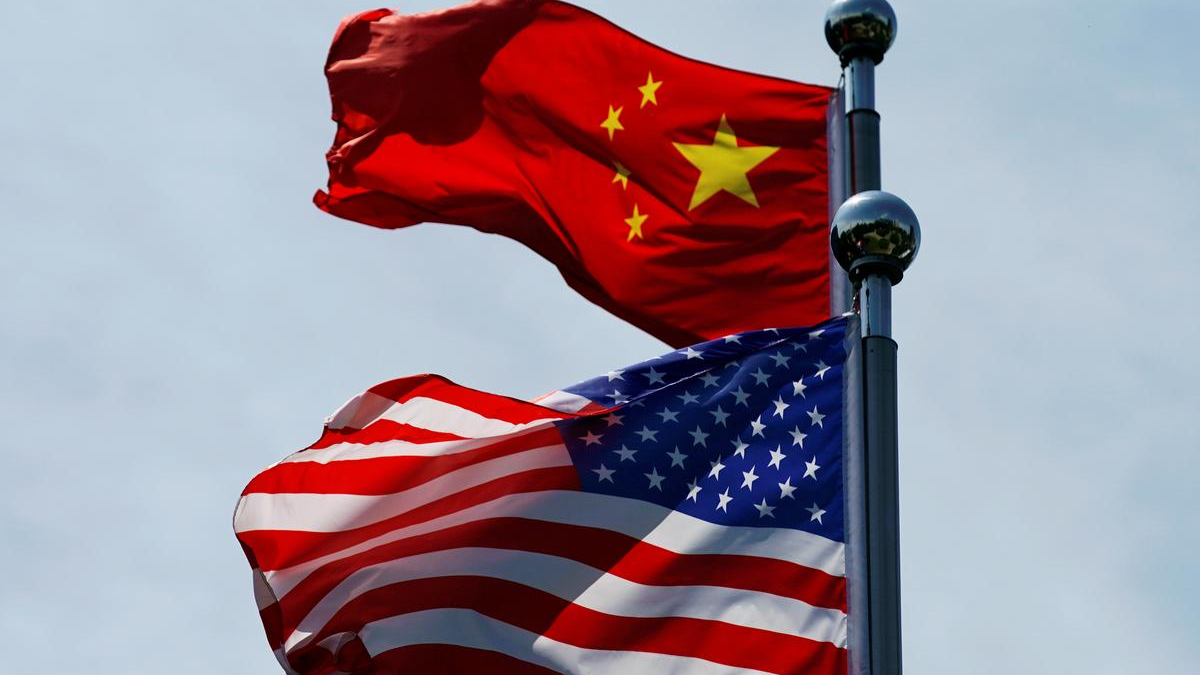
Twenty-two. That's how many months the China-U.S. trade conflict has roiled markets and tanked the confidence of both investors and consumers. When U.S. President Donald Trump imposed tariffs on imported aluminum and steel in March 2018, the roller coaster of business and political uncertainty became the focus of the global economy. On January 15, however, top Chinese and U.S. officials inked a phase one trade deal that comes out to 86 pages. Are things looking up?
Let's take a look at the numbers coming out of the deal. China has pledged to buy an additional 200 billion U.S. dollars in goods from the U.S. over the next two years – 77 billion in 2020 and 123 billion in 2021. The increased purchase will include 77.7 billion dollars for manufactured goods, 32 billion dollars for agricultural products, 52.4 billion dollars of energy goods, and 37.9 billion dollars of services.
Across the pond, the U.S. side will halve tariffs from 15 percent to 7.5 percent on 120 billion U.S. dollars in Chinese products while maintaining the 25 percent duties on roughly 250 billion U.S. dollars' worth of Chinese imports.
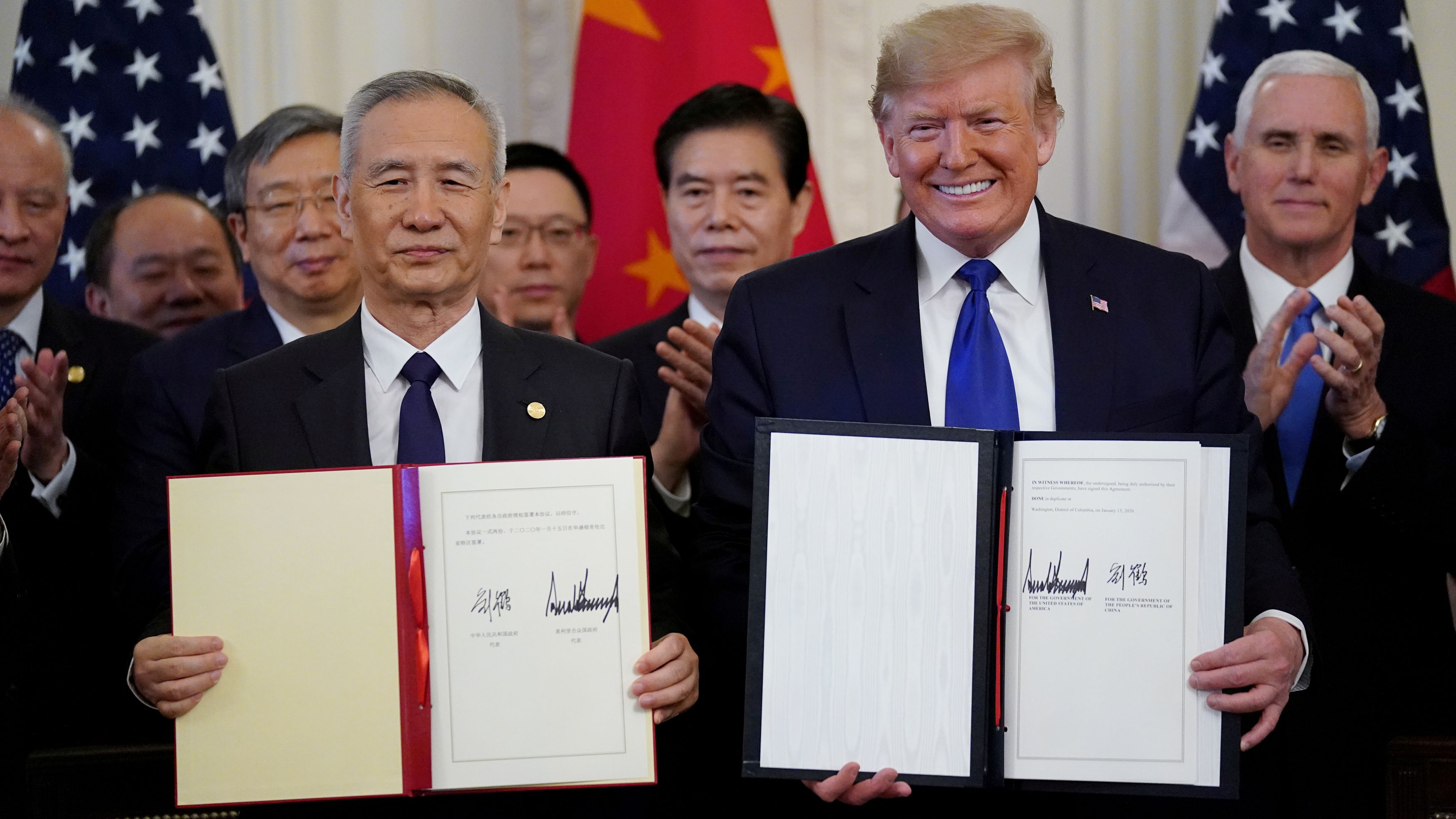
Chinese Vice Premier Liu He stands with U.S. President Trump after signing the trade agreement at the White House in Washington, DC, U.S., January 15, 2020. /Reuters Photo
Chinese Vice Premier Liu He stands with U.S. President Trump after signing the trade agreement at the White House in Washington, DC, U.S., January 15, 2020. /Reuters Photo
Virtually no part of the American economy has been left unscathed by U.S.-imposed tariffs on Chinese goods. Either businesses are taking it upon themselves to bear the cost increase on imported parts that are vital to manufacturing, or consumers are seeing higher prices in everyday retail items.
Meanwhile, farmers in key electoral states for Trump have had to tighten their belts after seeing much of their exports to China, such as soybeans fall due to counter-tariffs. These woes, however, have been slightly alleviated as China has agreed to buy an additional 30-plus billion U.S. dollars of agricultural products over two years. They come on top of the 24 billion U.S. dollars of farm purchases China made in 2017 before the trade war began.
"The hefty agreement denies the repeated rhetoric of decoupling between the two countries. During the years-long entanglement, China demonstrated its resilience, and the U.S. presents its influence," said Wang Yong, director of the Center for International Political Economy at Peking University. This culmination of bilateral compromises will have multinational firms breathe a sigh of relief as they seek to bring their businesses back to normal.
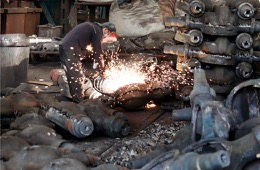
A workshop manufacturing automobile accessories in Huaibei, east China's Anhui Province. /Reuters Photo
A workshop manufacturing automobile accessories in Huaibei, east China's Anhui Province. /Reuters Photo
"The pact, imbued with concrete provisions, pressed the pause button on the perennial tangle between the world's largest two economic titans," Zhao Minghao, a senior research fellow with Charhar Institute, told CGTN.
Nonetheless, problems may arise from the implementation of the deal as Beijing and Washington will probably render different understandings to specific items, especially concerning intellectual property protection, added Wang Yong during an interview with CGTN. But changes regarding intellectual property seem to be in line with China's growing desire to shift to an innovation-led economy and with what U.S. businesses have long sought.
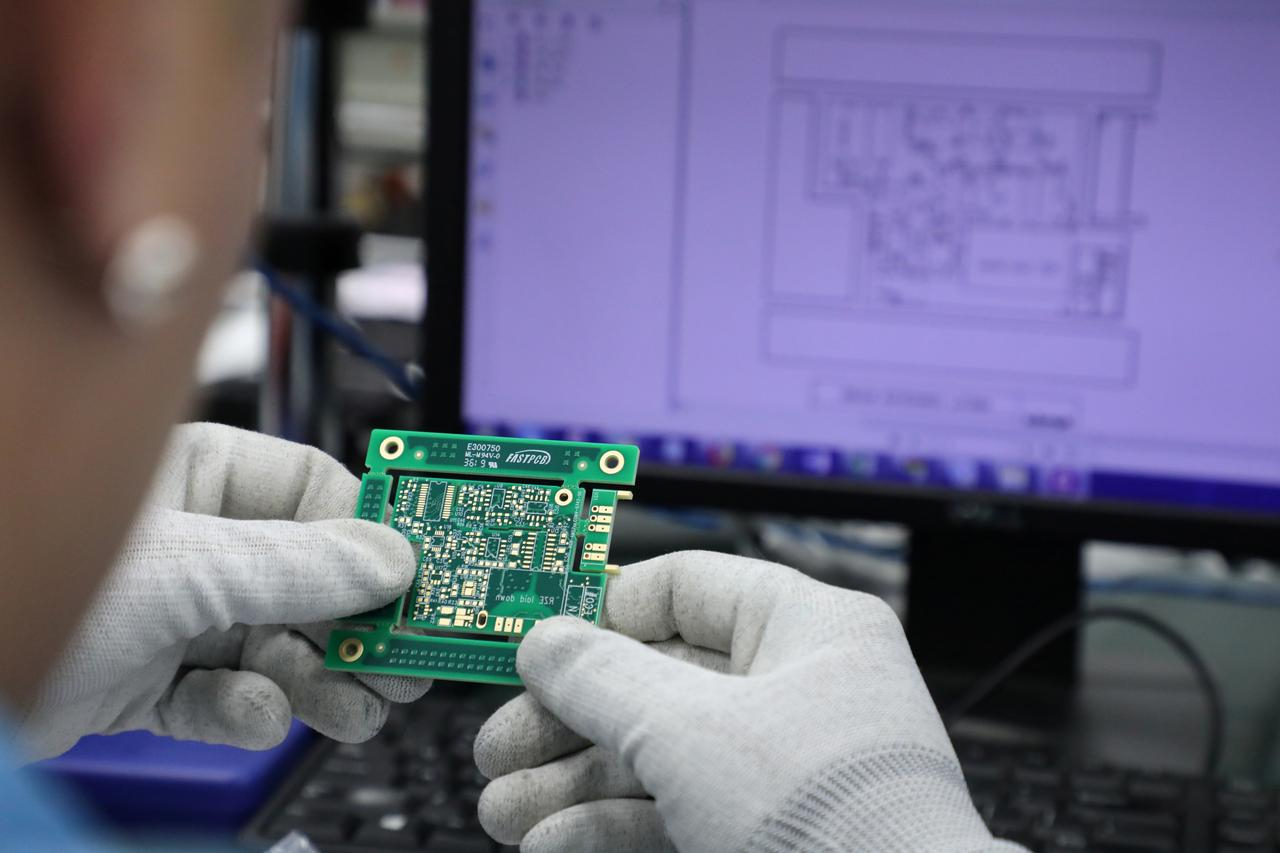
An employee of the automated test equipment designer and solutions provider Aemulus Holdings Berhad inspects a printed circuit board at a production facility in Penang, Malaysia, September 20, 2019. /Reuters Photo
An employee of the automated test equipment designer and solutions provider Aemulus Holdings Berhad inspects a printed circuit board at a production facility in Penang, Malaysia, September 20, 2019. /Reuters Photo
What's next?
"The thing that I'm concerned about is that once we've concluded the phase one agreement between the two countries, how are we going to make progress on phase two because it seems that we're keeping the harder issues for the next phase," Tim Stratford, chairman of the American Chamber of Commerce in China, told CGTN.
Despite the landmark deal, U.S. tariffs on Chinese products will only be eliminated, pending the successful negotiation of the next phase. Tariffs "will all come off as soon as we finish Phase Two," Trump remarked at the signing ceremony on Wednesday. "I am leaving them on because otherwise, we have no cards to negotiate with."
"Trump can tout the trade agreement as a big part of his 2020 reelection campaign," said Wang Jin, associate researcher at the China Institutes of Contemporary International Relations, during an interview with CGTN. Given China's agreement to buy more American goods, Trump doesn't have to hurry into phase two negotiations. Also, China would probably want to wait until after the U.S. presidential elections in November.
"And there's a possibility that the Trump administration will recover or increase duties on Chinese goods, and China should be prepared for that," said Wang. As for the future of China-U.S. relations, he remains cautiously optimistic – just as he was over a year ago when the rift between the two countries reached a boiling point.
Procurement rules, product standards, financial services, cyber security, and industrial policies will dominate phase two negotiations. "That'll be much tougher, with a slew of thorny issues to be solved," said Zhao. The long-time China-U.S. observer also predicts tariffs will be a new normal in bilateral ties.
Stratford attributes differences between Beijing and Washington in economic models to uneven circumstances for competition, which is among the hardest parts in phase two.
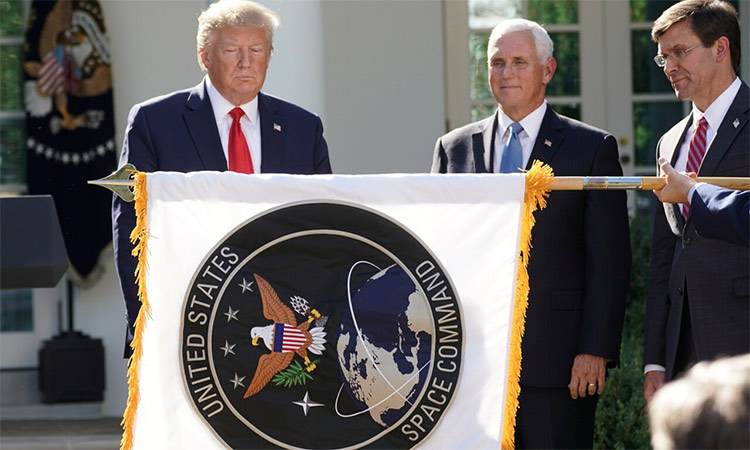
U.S. President Donald Trump (L), Vice President Mike Pence and Defense Secretary Mark Esper (R) watch as the flag for the new the U.S. Space Command is revealed at the White House in Washington, DC, U.S., August 29, 2019. /Reuters Photo
U.S. President Donald Trump (L), Vice President Mike Pence and Defense Secretary Mark Esper (R) watch as the flag for the new the U.S. Space Command is revealed at the White House in Washington, DC, U.S., August 29, 2019. /Reuters Photo
In the longer term, a China-U.S. tech decoupling is taking shape, noted Wang Jin. The Trump administration is mulling over blocking more sales to Huawei, citing national security concerns. In addition, the U.S. can block exports of hi-tech products to China from a third country if America-made components make up over 25 percent of the value.
"The two countries will remain in the strategic competition," Wang Yong said. The U.S. just launched its space force also on national security grounds as it takes China and Russia to be its growing rivals.
It appears tensions between the two sides in technology and military arenas will probably outlast those in trade, according to Zhao. Despite this lull, the four-decade-long engagement policy as we know it is already a relic of the past.